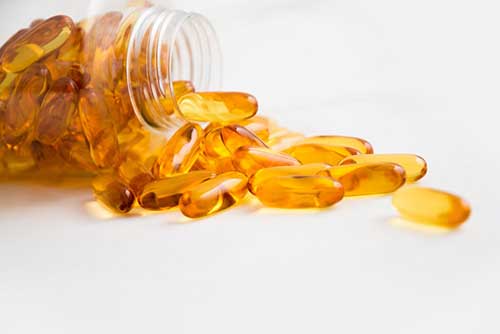…the scientific director of the Sugar Research Foundation, which got started in 1943, actually went on to work for the tobacco industry in 1954, for the Tobacco Industry Research Committee. So it could be that the tobacco industry actually learned from the sugar industry.”
Benefits of Gymnema Sylvestre
Blocks Sweetness
Interrupts desire/reward cycle
Reduces Insulin Spikes
Decreases sugar consumption
Stimulates Pancreas
Causes new cell growth
Blocks Fat
Reduces absorption of fat
Influential research that downplayed the role of sugar in heart disease in the 1960s was paid for by the sugar industry… With backing from a sugar lobby, scientists promoted dietary fat as the cause of coronary heart disease instead of sugar… [the review] showcases a decades-long battle by the sugar industry to counter the product’s negative health effects… The Sugar Research Foundation (SRF) paid scientists to do a 1967 literature review that overlooked the role of sugar in heart disease. SRF set an objective for the review, funded it and reviewed drafts before it was published in the New England Journal of Medicine, which did not require conflict of interest disclosure until 1984. The three Harvard scientists who wrote the review made what would be $50,000 in today’s dollars from the review.
How sugar became so prevalent in today’s diet
(Skip to How gymnema breaks the craving cycle)
Bear with me as I provide some background before I explain how gymnema can help curb your sweet tooth. I personally use it, because my ability to resist sugar is depressingly limited. It’s important to help you understand how your cravings are not necessarily your fault.
A brief history of premeditated addiction
For many years I’ve made the assertion that fast “food” and sugar have been as deceptive and manipulative in their advertising as tobacco was in years past. Tobacco companies were clever in their marketing. They sold their products as being healthy, trendy, glamorous, and sexy. Adults gave candy cigarettes to children. Flavored tobaccos covered the terrible burning flavors. Other numbing ingredients masked or diminished burning sensations in the mouth, throat, and lungs. These companies told every possible lie to entice new users, and engineered their products to be as addictive as possible to ensure a steady stream of sales.
Ronald McDonald invites you to come party on a colorful playground. Naturally you will want to bring the toy you just got out of your Happy Meal. Wendy looks like a sweet natured girl, yes? Burger King tells a Whopper every time they claim their “food” has “no fillers, no preservatives, no additives, no nonsense.” Fatty foods often have cannabinoids added to them. These are the substances that cause people who smoke marijuana to get “the munchies.” Products containing them unleash your appetite. To quote Lays, you literally “Can’t eat just one!” Think about who their target audience is for this type of imagery.
Gymnema acts very effectively to block your ability to taste sweetness. It prevents the feeling of pleasure and gratification that sugar causes in the brain, and stops the process of addiction from repeating. Learn more.
Consider candy and its packaging. It’s designed to be visually colorful and exciting. Stores place it at checkout counters where children stand at eye level to it. Cartoon characters animate the wrappers, and the flavors are intense. This serves not only to stimulate the immature taste buds in young mouths, but also to trigger the pleasure and gratification sensations that create addiction from a young age.
Disingenuous research
It should go without saying that funding will influence whatever it touches. This includes “scientific” research. Companies, institutions, and industries have vested interests in making statistically sound claims to consumers about their products’ benefits. To get that data, they often pay qualified researchers to test whatever these entities are selling.
Ginger relieves nausea and vomiting. It can also help maintain healthy blood sugar levels and reduce joint pain. This indicates ginger has good value as a natural anti-inflammatory. Learn more.
According to Cristin Kearns, this is exactly what happened in the mid-20th century. Scientists in the 1950’s and 1960’s had already been making connections between sugar and disease. To refute these findings, the sugar industry hired Harvard scientists, and paid them the equivalent of $50,000 to review the results and comment on the data. The New England Journal of Medicine published their opinions in 1967. Their comments were critical of the research connecting sugar to illness. The magazine did not require a conflict of interest statement at the time. This became a very influential article, and it shifted the entire focus toward the ways in which fat causes the problems independent scientists had already attributed to sugar.
Expanding profits
In an article for Time.com, Alexandra Sifferlin wrote that in 1954 Henry Hass (then-president of The Sugar Research Foundation [SRF]) gave a speech explaining how the sugar industry could expand its sales. He explained it would be possible to do so by filling the caloric void left behind once people eliminated fat from their diets. Sifferlin quotes Hass as saying,
“Leading nutritionists are pointing out the chemical connection between [Americans’] high-fat diet and the formation of cholesterol which partly plugs our arteries and capillaries, restricts the flow of blood, and causes high blood pressure and heart trouble… if you put [the middle-aged man] on a low-fat diet, it takes just five days for the blood cholesterol to get down to where it should be… If the carbohydrate industries were to recapture this 20 percent of the calories in the US diet (the difference between the 40 percent which fat has and the 20 percent which it ought to have), and if sugar maintained its present share of the carbohydrate market, this change would mean an increase in the per capita consumption of sugar more than a third with a tremendous improvement in general health.”
In 1976 the sugar industry launched a publicity campaign to influence the FDA. The FDA then reported the conclusions about sucrose that the industry wanted.
Why is sugar so addictive?
First, let me clarify that the term “addiction” is still controversial when discussing sugar. In an article for The Guardian, Nicola Davis interviewed a cardiovascular research scientist. His name is James J. DiNicolantonio of Saint Luke’s Mid America Heart Institute in Kansas. She quotes him as telling her that “[sugar] is actually more addictive than even cocaine, so sugar is pretty much probably the most consumed addictive substance around the world, and it is wreaking havoc on our health.”
This position sparked an intense rebuttal from other researchers. Some dismissed the claim that sugar is “a gateway to alcohol and other addictive substances” as “absurd.” Hisham Ziauddeen, a psychiatrist at the University of Cambridge, made a point about rodents seeming to display addiction and withdrawal symptoms. He observed they did so, only because they were exposed to vast quantities of sugar for limited amounts of time. He observed they also showed intense desire for zero-calorie sweeteners. According to Ziauddeen, “What this means is that it is the combination of that particular kind of intermittent access to sugar that produces those behaviours. Further you get the same kind of effect if you use saccharin … so it seems to be about sweet taste rather than sugar.”
Drug addiction is a chronically relapsing disorder that is characterized by a compulsion to take drugs and loss of control in limiting intake… Corticotropin-releasing factor (CRF) is a 41-amino acid polypeptide that mediates hormonal, autonomic and behavioral responses to stressors… Three neurobiological circuits have been identified to have heuristic value for the study of neurobiological changes associated with the development and persistence of drug dependence: a binge/intoxication-related circuit, a withdrawal/negative affect-related circuit, and a preoccupation/anticipation (ie, craving)-related circuit.
How sugar imitates cocaine
For the purposes of this blog, that point about sugar vs saccharine is moot. Whether it be sugar or sweetness, the end result is effectively the same: Health and Wellness suffer a horrible decline. But sugar does cause similar responses within the brain as cocaine, because it increases free floating dopamine by the same mechanism. Sugar, like cocaine, prevents the reabsorption of dopamine between neurons. Sugar blocks the receptors that take up any excess amounts of the neurotransmitter. Like cocaine, it causes a saturation of dopamine. Thus it induces similar types of euphoria, pleasure, and reward. Also, sugar ultimately requires larger and larger doses to create the same effect.
Perhaps “pleasure” is the wrong word? According to our friends at Wikipedia,
“In popular culture and media dopamine is often seen as the main chemical of pleasure, but the current opinion in pharmacology is that dopamine instead mediates incentive salience which signals the value of a given reward to the organism and motivating action required for attainment. In other words, dopamine appears to mediate desire and motivation moreso than pleasure.”
As I said in another blog entry about carbohydrates, desiring sweetness in and of itself isn’t bad. We perceive reward when we taste sweetness, because we need to continue eating carbohydrates. Sugar is the first and easiest source of energy, so our brain has evolved to recognize foods that contain high quantities of it. We like sugar, because 100,000 years ago our forebears needed to consume it whenever they happened to find it in large quantities. This instinct helped our ancestors survive famines, but we no longer live in that type of food environment.
The mechanism of addiction
Addiction is a complicated interaction within multiple parts of the brain that are each connected to desire, pleasure, reward, gratification, emotions, personality, and memory. It affects the hedonic centers of the brain (think “hedonism”). When too much dopamine floods too frequently into the receptors that affect the hedonic centers, the neurons are physically changed. It is for this reason that people suffering from addiction “chase the dragon,” have terrible mood swings, altered personalities, and distorted memories.
What does this have to do with sugar? Again, in many ways it imitates cocaine and other substances that block the uptake of dopamine. I am not suggesting that sugar is a hard drug of abuse like heroin. Rather it’s similar in scale to nicotine. And yet think about the destruction to public health that that “lesser” addiction has inflicted.
But companies know what they’re doing when they hijacks consumers’ abilities to show moderation. Coca Cola refers to the original formula containing cocaine. Processed foods have added cannabinoids and other substances that ignite appetite while also inhibiting satiation. A huge number of products contain sugar, even if they don’t taste sweet. It’s a cynical tactic in the broader strategy of increasing sales.
Moving toward a solution
This article became more involved than I originally intended, but there was much more to discuss than the mechanics of taste buds. This is the problem as I see it: That we need something like Gymnema sylvestre in the first place. There is a purposeful agenda in play that borders on the criminal. Companies can (with the consent of the government) feed people slow-acting poisons? That is disturbing. They call the stuff “food,” but you’d profit from questioning that. Are people responsible for their choices and actions? Yes, of course. Have people been hijacked with misinformation that undermines their ability to make the best nutritional choices? Yes, of course.
I’ve had a sordid relationship with food. One day I will share my story about anorexia, but that is beyond the scope of this entry. But now that I am deeply invested in eating (instead of starving), I see how difficult it is to make healthful choices. My own sugar addiction (and I do feel that’s what I’ve experienced, despite the arguments of some researchers) began when I was a student. As a young dancer, I was trying at all costs to avoid consuming fat. I developed strategies to avoid eating around others altogether, because people constantly pressured me to eat junk food. What I have come to recognize is that variety really is the most important underlying fundamental of meal planning.
In the meantime, as I write this, I’ve just had an intense urge to eat several pieces of chocolate. I keep less of these tempting foods in my home, so that they aren’t readily available. But I do keep a little bit around. I already had some at lunch, so I should not have more. I took a Crave Crush, and I realize now that I was simply really thirsty.
The mode of action of the drug is through stimulation in insulin secretion from the pancreas. It also exerts a similar effect by delaying glucose absorption in the blood. The atomic arrangements of gymnemic acids are similar to sugar molecules, which fill the receptors in the taste buds preventing its activation by the sugar molecules in food. Similarly, in the intestine, it attaches to the receptor present in the external layer of the intestines, thereby preventing the absorption of sugar molecules by intestines, leading to reduction in blood sugar levels…
The hypoglycemic effect of gymnemic acids includes a cascade of events starting from modulation of incretin activity, which triggers insulin secretion and release. It also increases regeneration of pancreatic islet cells to enhance enzyme mediated uptake of glucose. This process decreased glucose and fatty acid assimilation in the small intestine, and it interferes with the ability of receptors in the mouth and intestines to [detect] sweetness… Gymnemic acid has been found to interact with glyceraldehyde-3-phosphate dehydrogenase (GAPDH), a key enzyme in glycolysis pathway.”
How gymnema breaks the craving cycle
The reason addictions develop is because they provide a sense of reward. This expresses itself as cravings and fixations. These urges become compulsions, because we evolved to be reward motivated. This is necessary, so that we enjoying eating, socializing, and having sex. Obviously, all these activities are necessary for us to survive as a species. In this instance, sugar stimulates various portions of the brain that affect our desire to consume enough calories to survive famines.
Since it is the cycle of desire and reward that fuels addiction, treatments that focus on removing, interrupting, or preventing gratification help people escape the loop. In the case of sugar (or sweetness in general), the components within gymnema literally block the ability to taste sweets.
At the microscopic level, acids in gymnema are shaped very much like molecules of various sugars. As with ginger’s mechanism for reducing nausea, the mechanism responsible for gymnema blocking sweet flavors works by filling spaces. Taste buds for sweetness have receptors shaped like sugar molecules. In this instance gymnema binds only to these tastebuds, because it fits like a puzzle piece into the sweetness receptor. This prevents sugars from making contact, while leaving other flavors unaffected. Without that contact between sugar and sweet taste bud receptors, the perception of sweetness is temporarily suppressed.
Not tasting sugar removes the entire point of eating it. Have you noticed how finicky cats are? They show zero interest in many foods, because they lack tastebuds for sweetness. They are super carnivores (their diets are more than 70% meat), so there is no incentive for them to want to eat carbohydrates. Gymnema doesn’t turn you into a super carnivore, but it does make you much more selective for 15-45 minutes at a time.
By the numbers
Aside from not feeling gratification, gymnema also reduces temptation and cravings. In a 2017 study testing the effectiveness of gymnema lozenges, participants were offered candy. Of those who accepted, half took gymnema and half got a placebo tablet. Afterward they were offered more candy. Those who received the supplement showed a 31% decrease in accepting the subsequent offers, and the total volume of all the candy they did accept after using gymnema dropped 44%.
All of this has obvious advantages. For me personally, I am less likely to consume those insulin spiking calories. When I first tried gymnema I was offered my choice of candy. I went for the purple Skittles (I don’t want to offend grapes). They were just as awesome as I remember. I took the lozenge. They offered me more purple Skittles. I didn’t really want them (which in itself was an improvement), but I wanted to see how well the gymnema worked. I put them in my mouth, and I experienced instant revulsion. It was last biting through egg shells to chew on pencil erasers. Without the sweetness distracting me from everything else, the true nature of the candy became obvious. It tasted horrible, and I had to spit it out.
Crave Crush & gymnema lozenges
Crave Crush made a very strong impression on me. Now when I do have a craving, I use one of the lozenges. The memory of the purple Skittles pretty much shuts down any interest in the treat that was tempting me. Often I realize I’m just thirsty, and once I drink a glass of water the “hunger” goes away.
All of this adds up to huge benefits, especially for Type 2 diabetics. Avoiding sugar not only reduces eating calories, it also removes the insulin spikes that come with high sugar foods. Even if someone were to eat sugar after using gymnema, the acids in the supplement also reduce absorption of sugar. In this way insulin levels remain more stable. What’s more, gymnema also interferes with the body’s ability to process carbohydrates and fats into energy. This prevents excess calories from being stored. Crave Crush also stimulates the pancreas to create new cells, and improved pancreatic function creates more efficient glucose clean up.
Lozenges are the only form of gymnema that have helped me. I returned a tongue spray. It worked only about half as well, because it didn’t seem to adhere to my tongue. The bottle said to use one squirt, but that didn’t help at all. I used a total of 10 sprays, and it was still nowhere near are effective as letting a tablet dissolve in my mouth for five minutes. I personally have not used the pill form, but the research shows all the same advantages (minus interrupting the perception of sweetness).
Conclusion
In terms of addiction, weight loss, fat reduction, and glucose stabilization, gymnema is very helpful. I don’t believe in miracle products, and I don’t claim this is one. It’s a potential tool I use in the process of improving or maintaining wellness. Making progress requires consistent discipline. For those like myself who wrestle with a sweet tooth, gymnema helps. The one caveat: You have to actually use the product. There have been plenty of times I felt a craving, but purposefully didn’t take the supplement. I didn’t want it to block my pleasure (which probably speaks to my compulsion to taste sugar).
Isn’t that what addiction is all about?
Once you have stabilized your blood sugar by breaking your addiction, you might also consider creating your own fat burning stack. I described one recipe in a past blog entry. You can find the components for it here. Ginger can also help. Also, I can suggest natural sweeteners that are more healthful than sugar.
Recent Posts

Caffeine: 14 better options to ease SAD
Nearly a year ago to the dot, I wrote an article about Seasonal Affective Disorder (SAD), but there I focused on the importance of getting access to a full range spectrum of light. Here I’d like to focus on caffeine and sleep’s effect on SAD. I’ll also offer suggestions for what to do to help you feel better on the dark days.

Avoid fish oil supplements
I don’t generally promote supplements. Most of them play to specific, isolated points of medical research to serve as a magic pill. One remarkable example of this is fish oil.

Covert Narcissist?! How do I know if I am one?
After a fight with two friends, one of them accused me of being a covert narcissist. That offended me to my core, but then I took a moment to consider whether or not it might be true. What if I am??


